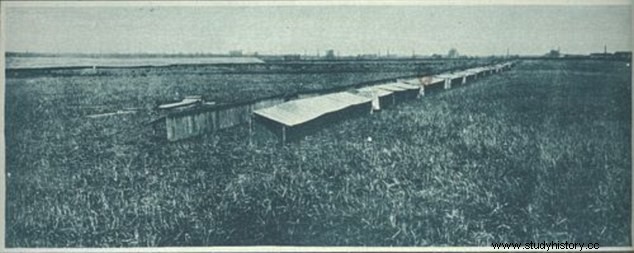Although during the First World War the aerial bombardments hardly had importance in the development of the conflict, the bombardments of London by the Zeppelins could be reviewed Germans, in Paris they must have thought that it was better to be cured in health. Faced with the possibility of future air raids by the Germans, they decided to build a replica of Paris as a decoy.

Illuminated it gave the illusion of a moving train
In 1918, when the First World War was coming to an end, a suitable area was located to build the decoy on the northern outskirts of Paris, about 25 km away, in the Saint-Germain forest. for which, in addition, the section of the Seine river that crossed it was similar to that of the capital. To give more realism to the project, there were wooden replicas of emblematic buildings (such as the North railway station, Gare du Nord ), singular monuments (Arc de Triomphe ), false railway tracks, the recreation of industrial suburbs and neighborhoods such as Saint-Denis or Aubervilliers .
This lure was meant to endure possible night bombing, since during the night, and because radar did not yet exist, the only way to locate targets was the pilots' vision. So, the second City of Light had to be endowed with , of that… of light and color to deceive the enemy. Thanks to private funding, the electrical engineer Fernand Jacopozzi was hired. . With games of light the city would come to life, industries would seem to be working, trains would circulate... At the end of the war, and as a reward for services rendered, Jacopozzi was commissioned to light the Eiffel Tower. Fortunately, there was no opportunity to test the effectiveness of the second Paris... the war ended and with it the project.

Only the North area marked with A2 was built
